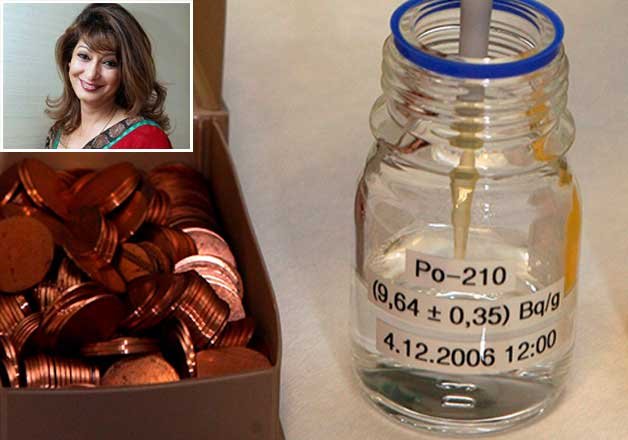
New Delhi: After nearly one year, Delhi Police has finally registered a case of murder against unknown persons in the Sunanda Pushkar's death case. The medical board headed by Dr Sudhir Gupta, constituted to investigate Sunanda's death, has mentioned Polonium-210 as one of the probable poisons that may have caused the death of Sunanda Pushkar.
There are two famous cases of polonium poisoning which shocked the world. One was that of Yasser Arafat, the legendary Palestinian leader who died in 2004.
Investigations by Swiss scientists showed in 2013 that the cause of death was probably polonium poisoning. The second case was that of Russian spy, Alexander Litvinenko, who was murdered after he drank tea laced with polonium. This incident took place in 2006.
So what is this Polonium-210?
Polonium-210 is one of the world's rarest elements, discovered in 1898 by scientists Marie and Pierre Curie and named in honor of her country of origin, Poland. It occurs naturally in very low concentrations in the Earth's crust and also is produced artificially in nuclear reactors. In small amounts, it has legitimate industrial uses, mainly in devices to eliminate static electricity.
IS IT DANGEROUS?
Very. If ingested, it is lethal in extremely small doses. Less than 1 gram (0.04 ounces) of the silver powder is sufficient to kill. A 2007 study by radiation experts from Britain's Health Protection Agency concluded that once polonium-210 is deposited in the bloodstream, its potent effects are nearly impossible to stop. A poisoning victim would experience multiple organ failure as alpha radiation particles bombard the liver, kidneys and bone marrow from within. The symptoms shown by Litvinenko — nausea, hair loss, throat swelling and pallor — are also typical.
WHO CAN GET THEIR HANDS ON IT?
The good news — not too many people. The element can be a byproduct of the chemical processing of uranium, but usually is made artificially in a nuclear reactor or a particle accelerator. These nuclear facilities are monitored and tightly regulated under international agreements.
John Croft, a retired British radiation expert who worked on the Litvinenko case, said a dose large enough to kill would likely have to come from a government with either civilian or military nuclear capabilities. That category includes Russia — producer of the polonium believed to have killed Litvinenko — and Arafat's foe, Israel. But it also includes dozens of other nations, including the United States.
WHY WOULD IT BE ATTRACTIVE TO ASSASSINS?
Polonium makes a good weapon. Its large alpha particles of radiation do not penetrate the skin and don't set off radiation detectors, so it is relatively easy to smuggle across international borders. Polonium can be ingested through a wound or inhaled — but the surest method would be to have the victim consume it in food or drink. Litvinenko drank tea laced with polonium during a meeting at a luxury London hotel.

























